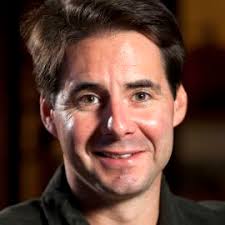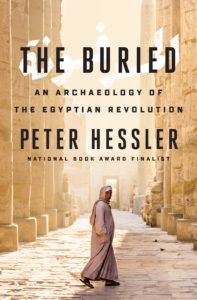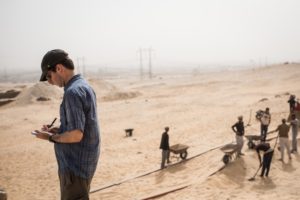Peter Hessler’s New Book on Egypt (China)
 When Peter Hessler graduated from Princeton, he went to England as a Rhodes Scholar. Finishing school, he decided in 1994 to travel home by way of China.
When Peter Hessler graduated from Princeton, he went to England as a Rhodes Scholar. Finishing school, he decided in 1994 to travel home by way of China.
On the Trans-Siberian Railway from Moscow to Beijing, via Mongolia, he observed traders carrying odd products, from speedometers to Mongolia and Russian-speaking clocks to China. He wrote an essay about his trip and sent a blind submission to The New York Times. They published his article. “It was a shock to me,” Peter recalls. “And it was first time I had been published in a newspaper.”
His trip took six months, and Peter continued to write articles for publication. An essay about camping on the Great Wall of China appeared in The Philadelphia Inquirer; he then wrote a humorous piece about eating ice cream in Vietnam.
These short essays would be his first small steps into a publishing career. “My initial trip around the world taught me to be resourceful, both as a traveler and as a writer,” says Peter. “Before traveling around the world, I would have never thought of writing something for half a year without any income or promise of publication.”
Peter would become a PCV in China from 1996-98 and write four books on his experiences, beginning with River Town, the story of his Peace Corps tour. After living and writing three more books, he would return to the U.S., marry Leslie T. Chang, also a writer, win a MacArthur Foundation “genius” Award in 2011, and move to Cairo for the next five years. Living there with his wife and twin daughters, and while writing articles for The New Yorker, he began to work on another book, this time about Egypt.
He learned Arabic, explored Cairo’s neighborhoods, and visited the legendary archaeological digs of Upper Egypt. After his years of covering China for The New Yorker, friends warned him Egypt would be a much quieter place. But not long before he arrived, the Egyptian Arab Spring had begun, and now the country was in chaos.
In the midst of the revolution, Hessler often traveled to digs at Amarna and Abydos, where locals live beside the
tombs of kings and courtiers, a landscape that they call simply al-Madfuna: “the Buried.” He and his wife set out to master Arabic, striking up a friendship with their instructor, a cynical political sophisticate. They also befriended Peter’s translator, a gay man struggling to find happiness in Egypt’s homophobic culture. A different kind of friendship was formed with the neighborhood garbage collector, an illiterate but highly perceptive man named Sayyid, whose access to the trash of Cairo would be its own kind of archaeological excavation. Hessler also met a family of Chinese small-business owners in the lingerie trade; their view of the country proved a bracing counterpoint to the West’s conventional wisdom.
Through the lives of these and other ordinary people in a time of tragedy and heartache, and through connections between contemporary Egypt and its ancient past, Hessler creates a portrait of a country and its people. What emerges is a book of uncompromising intelligence and humanity–the story of a land in which a weak state has collapsed but its underlying society remains in many ways painfully the same.

The Buried: An Archaeology of the Egyptian Revolution
by Peter Hessler (China 1996-98)
Penguin Press
480 pages
May 7, 2019

I thoroughly enjoyed Peter’s books on China, which were fascinating (even for someone who knows China pretty well) and well-written. I’m looking forward to reading his take on Egypt.
Excellent review of book and up date on PH. Looking forward to viewing Egypt through his eyes and the people he writes about.